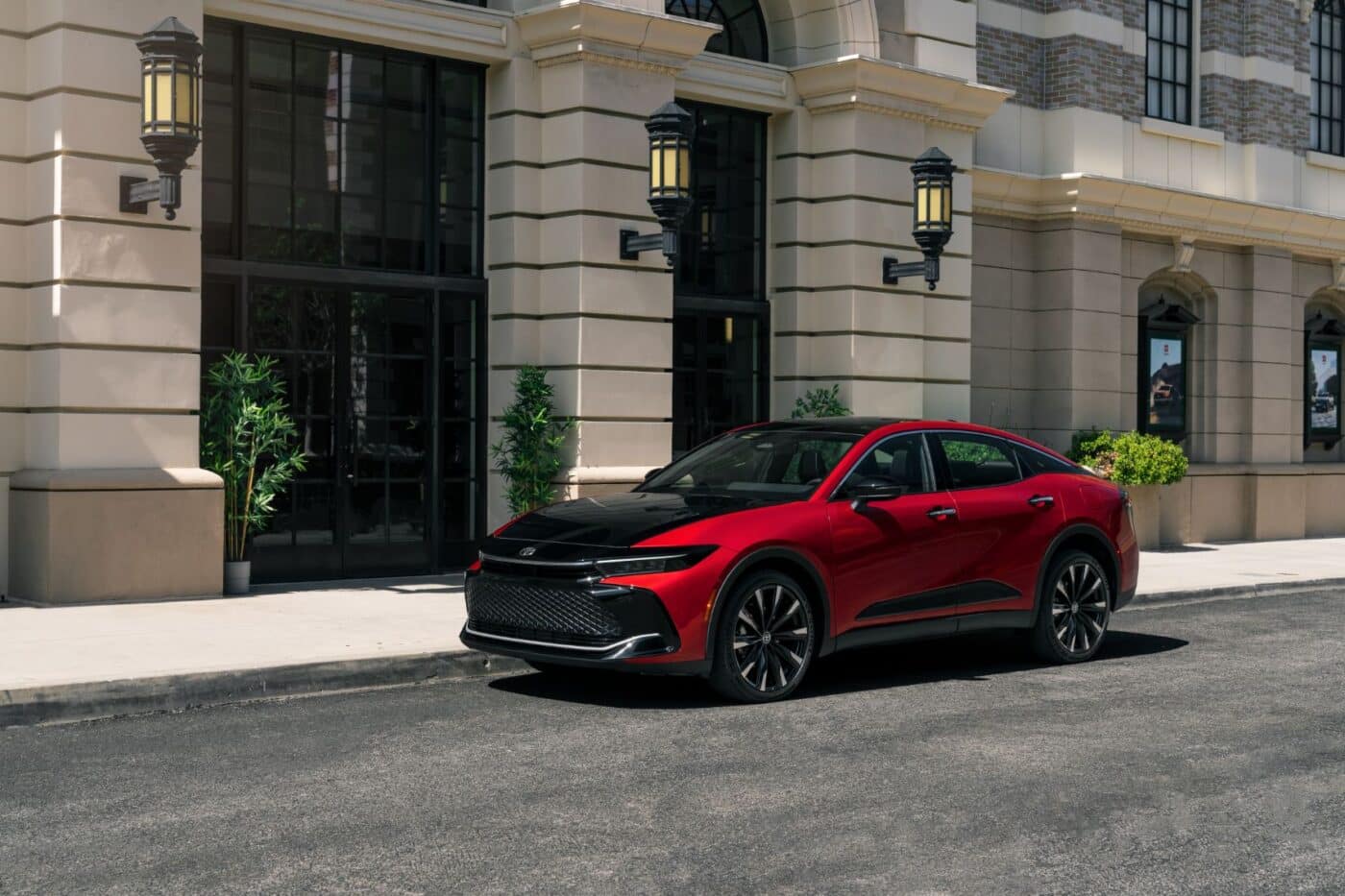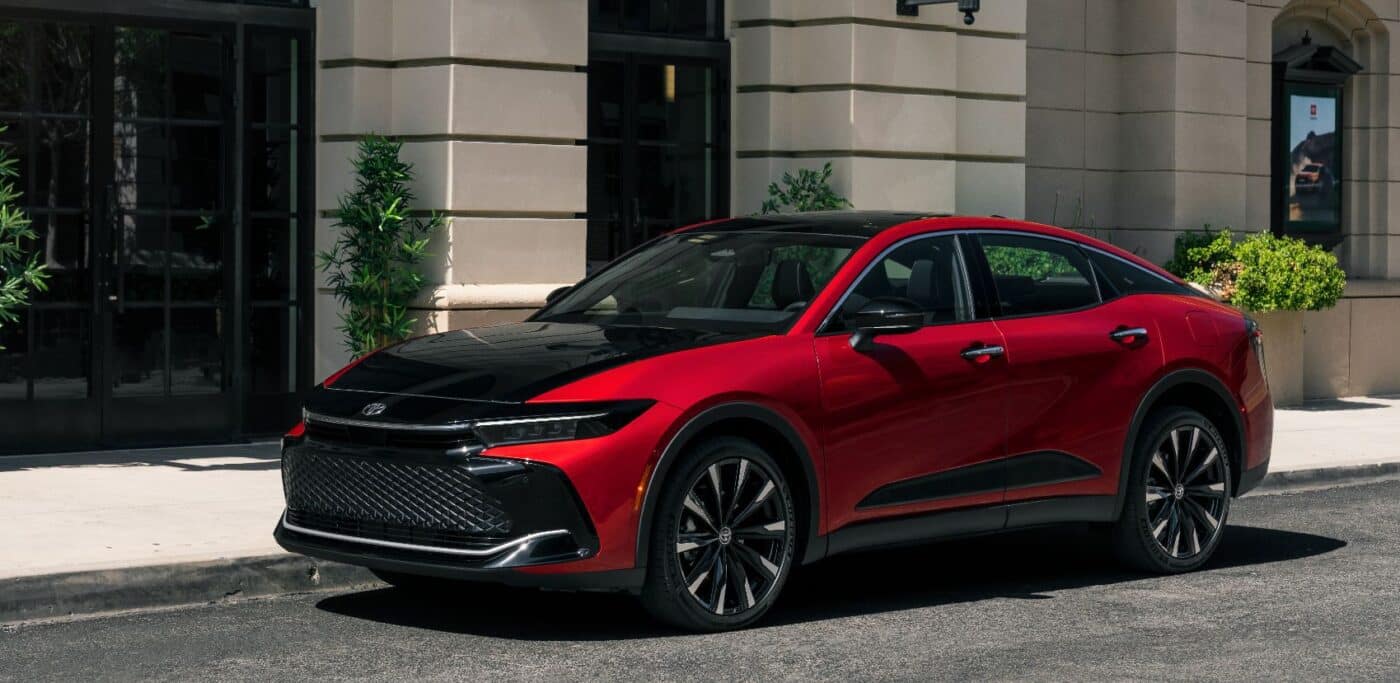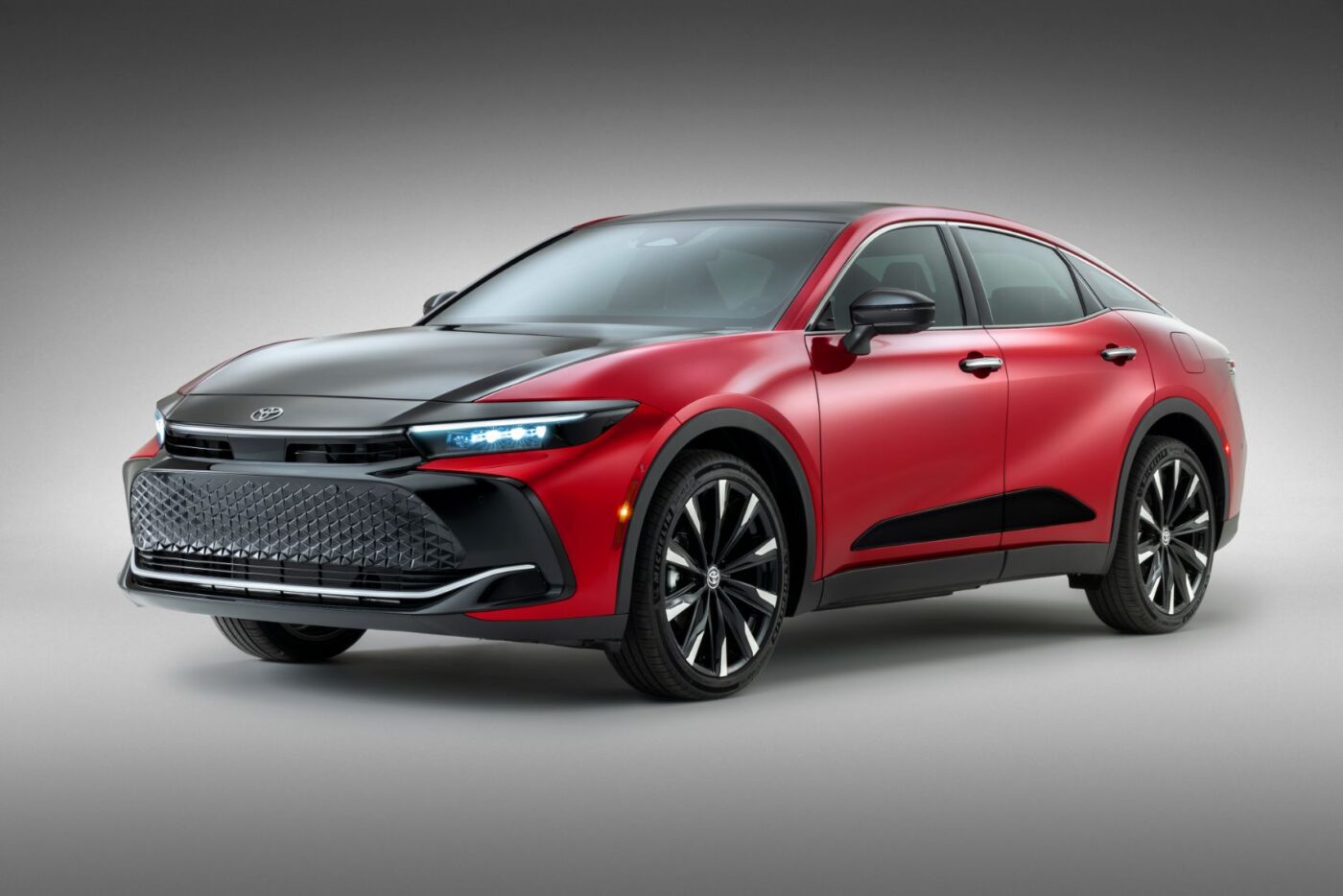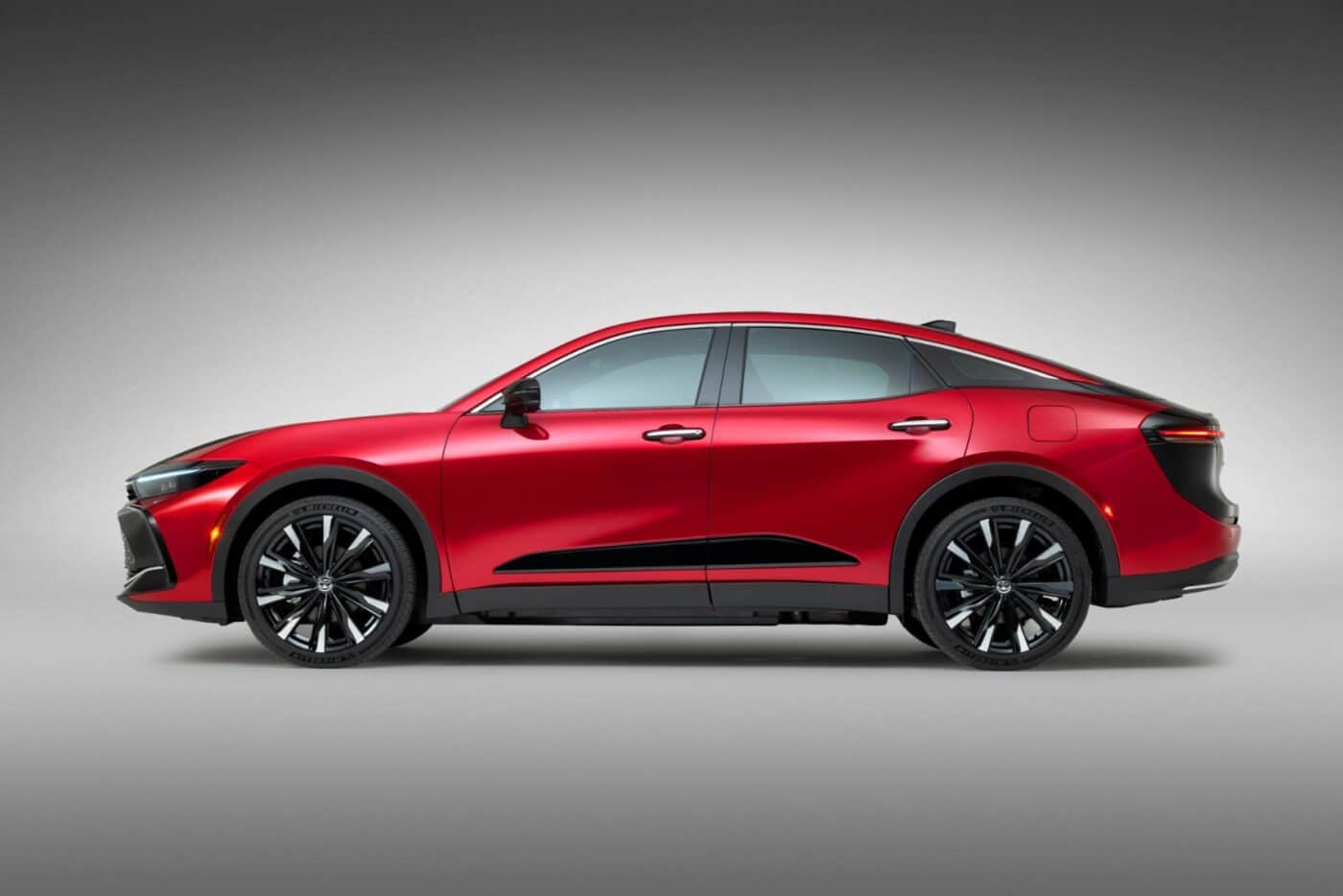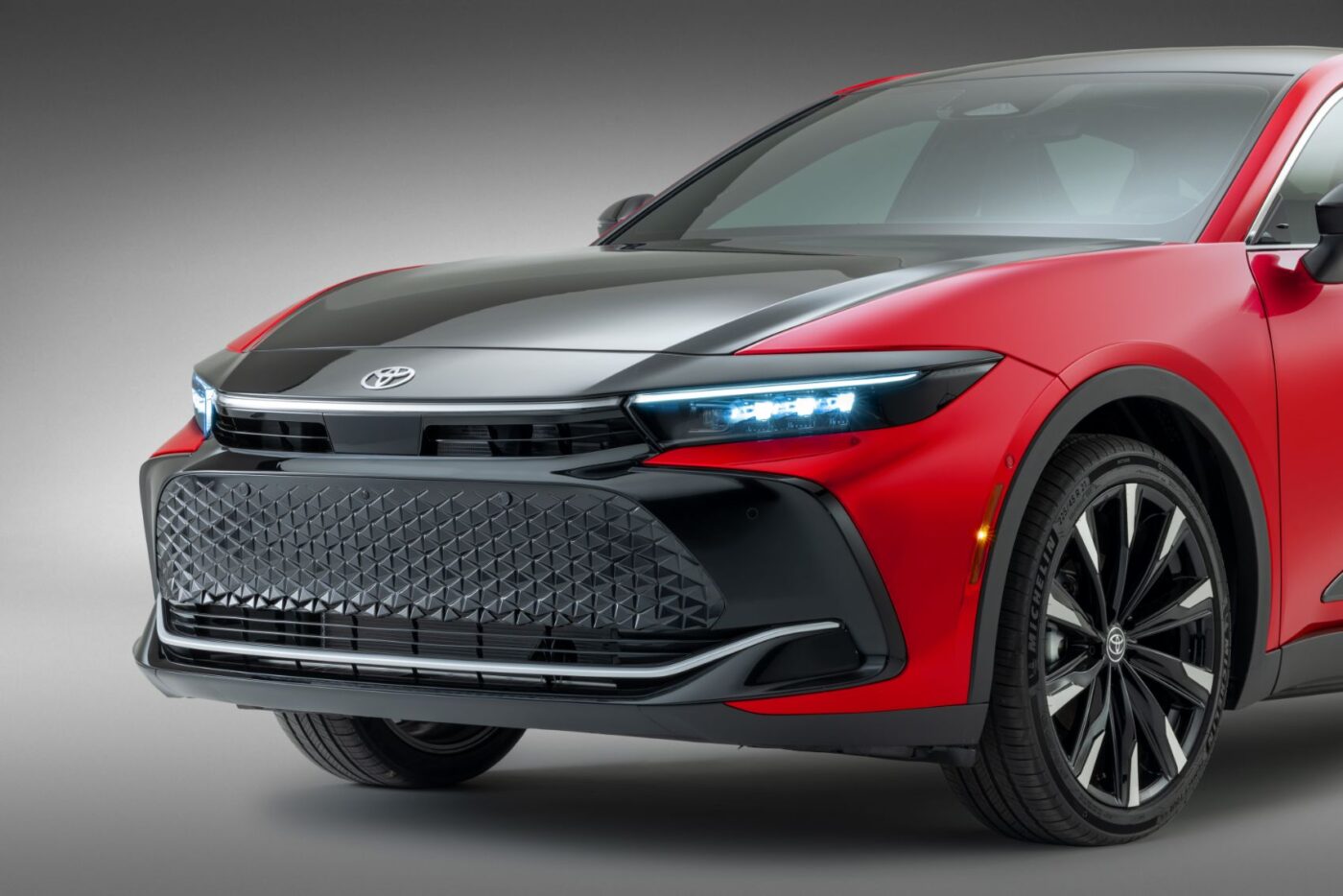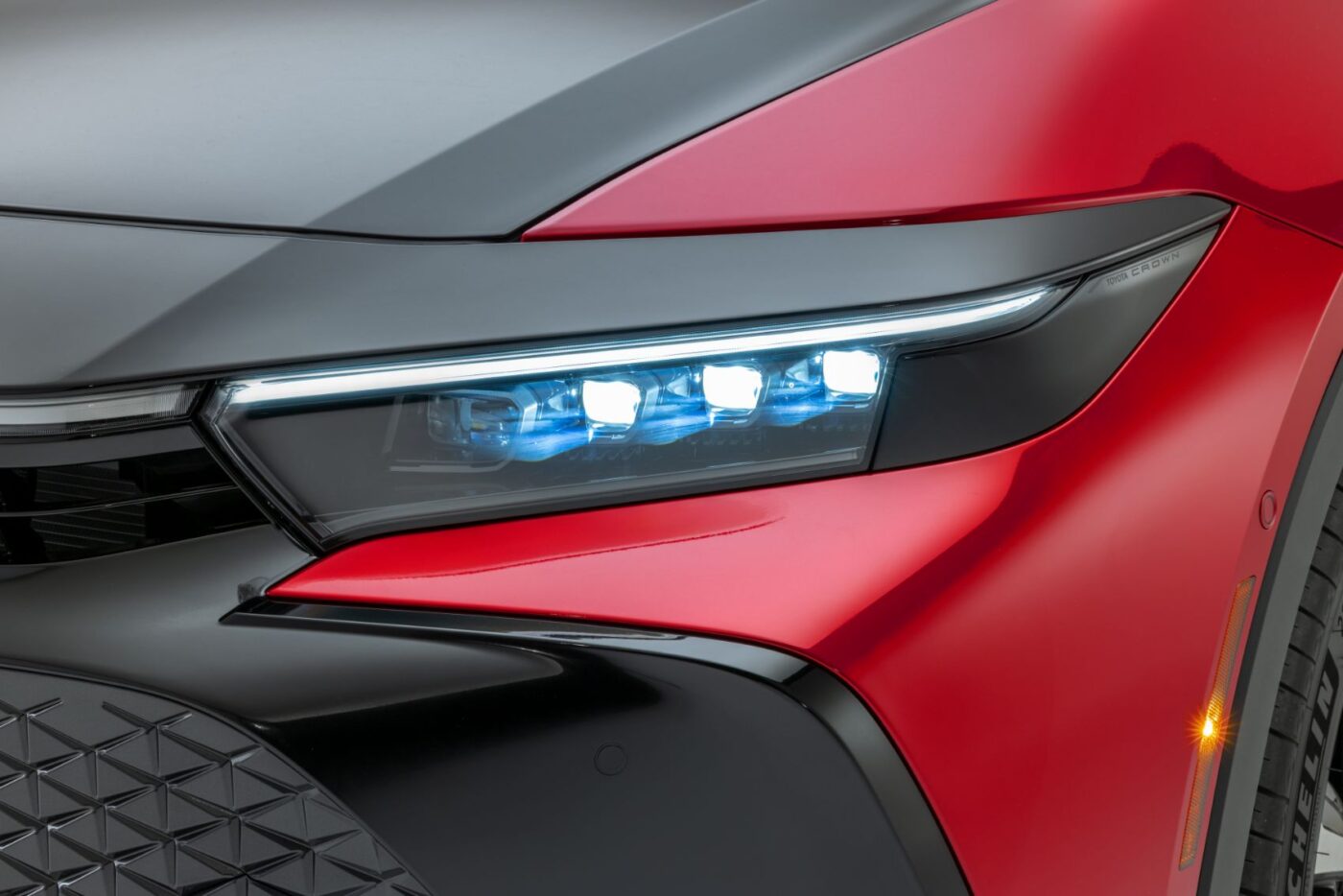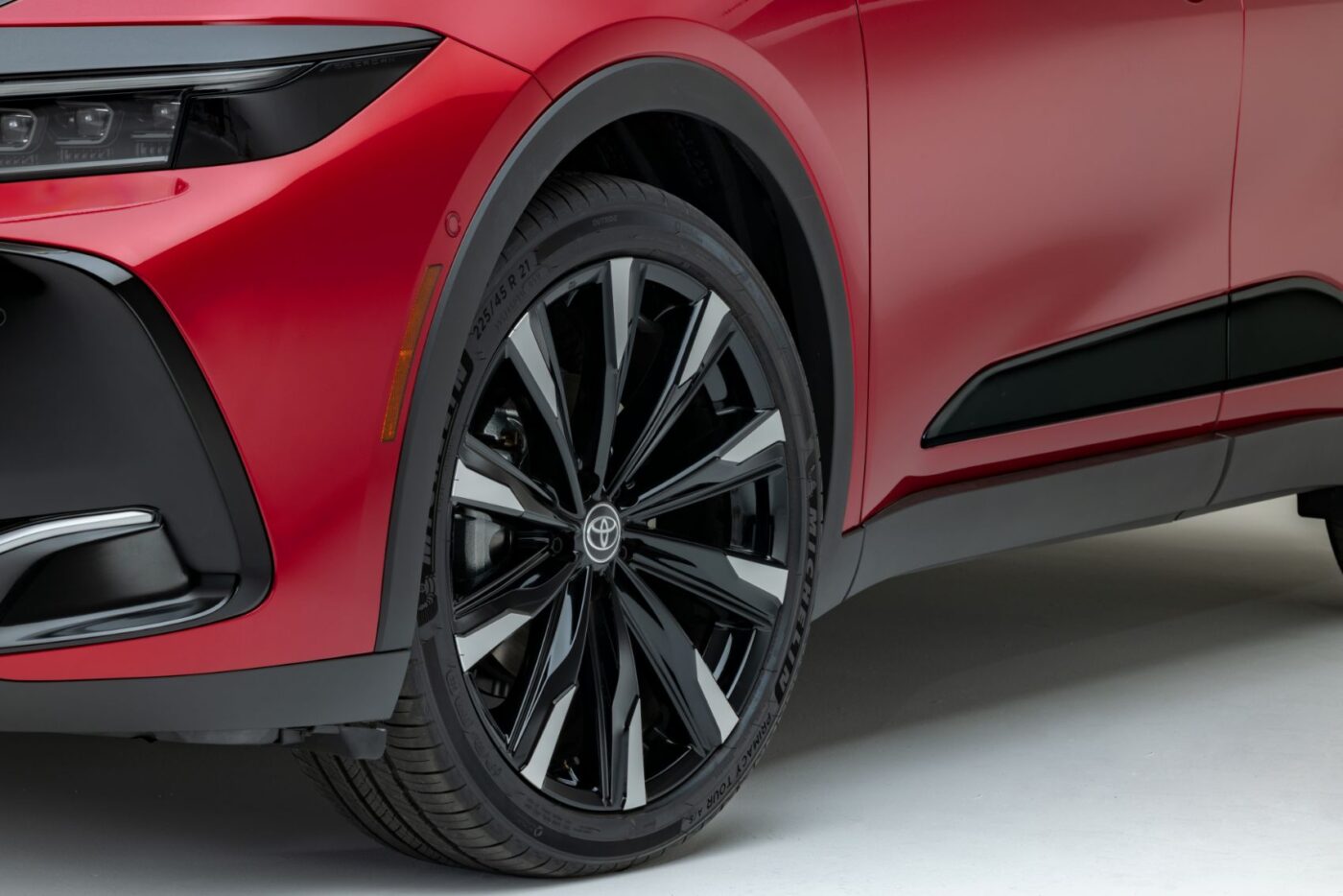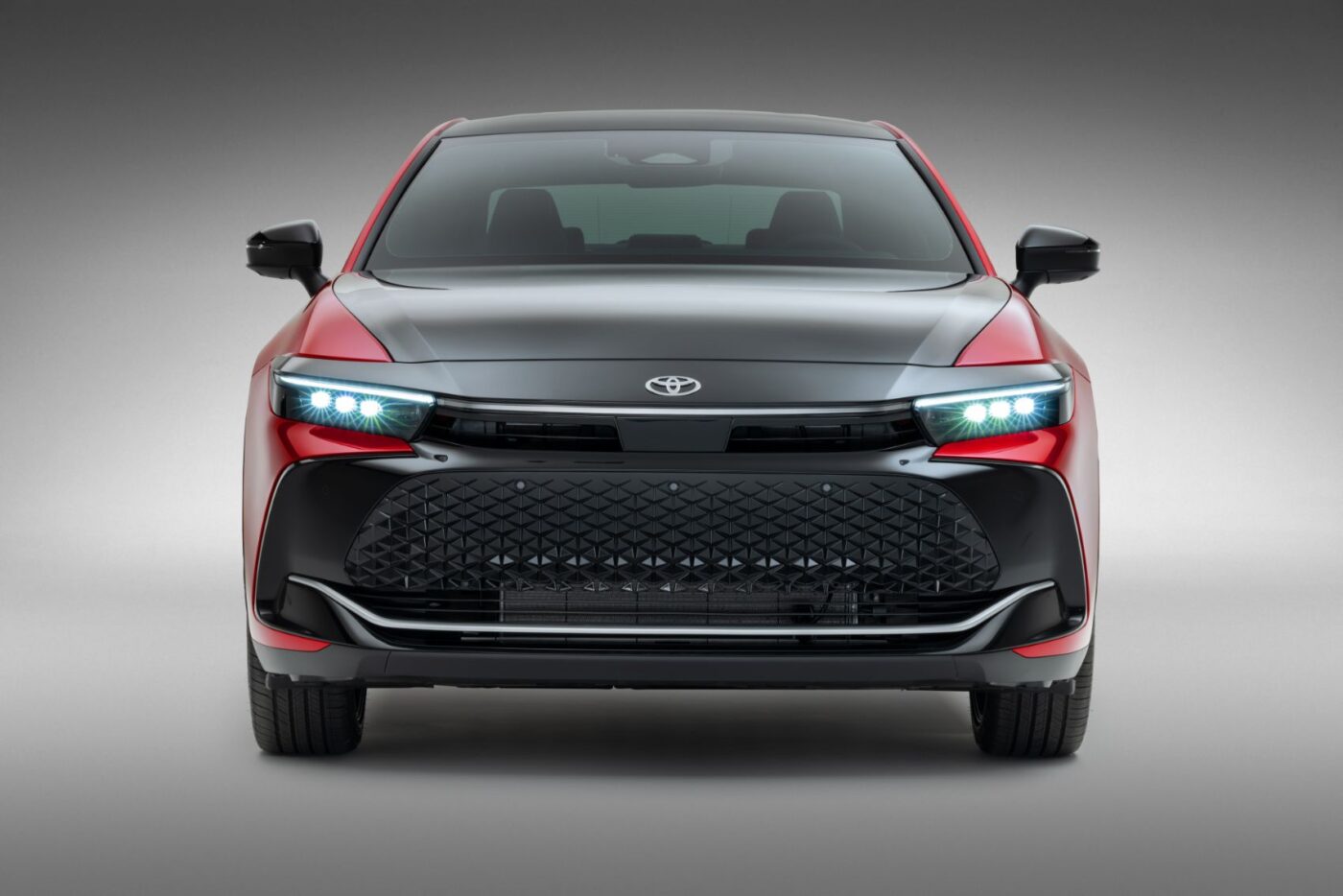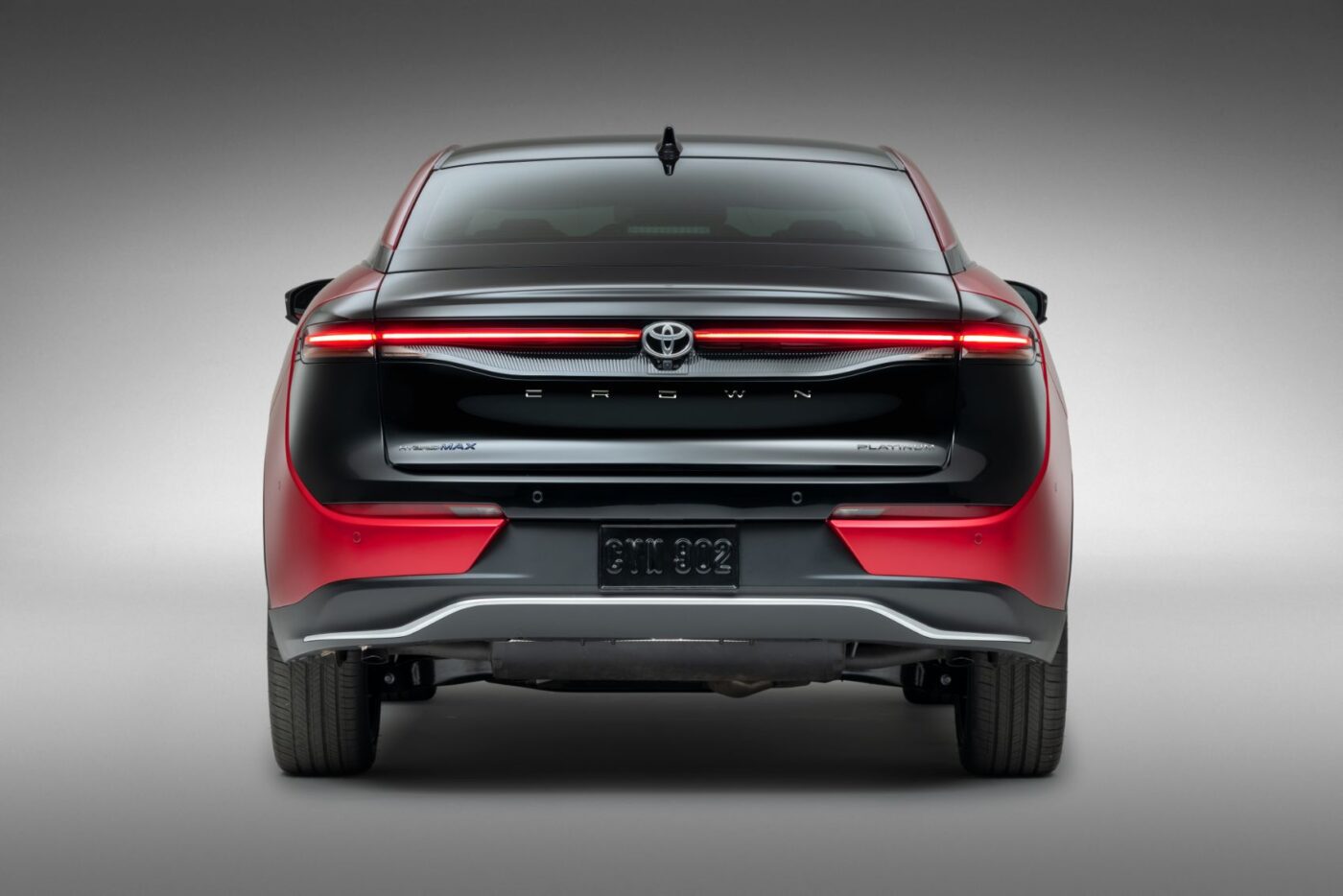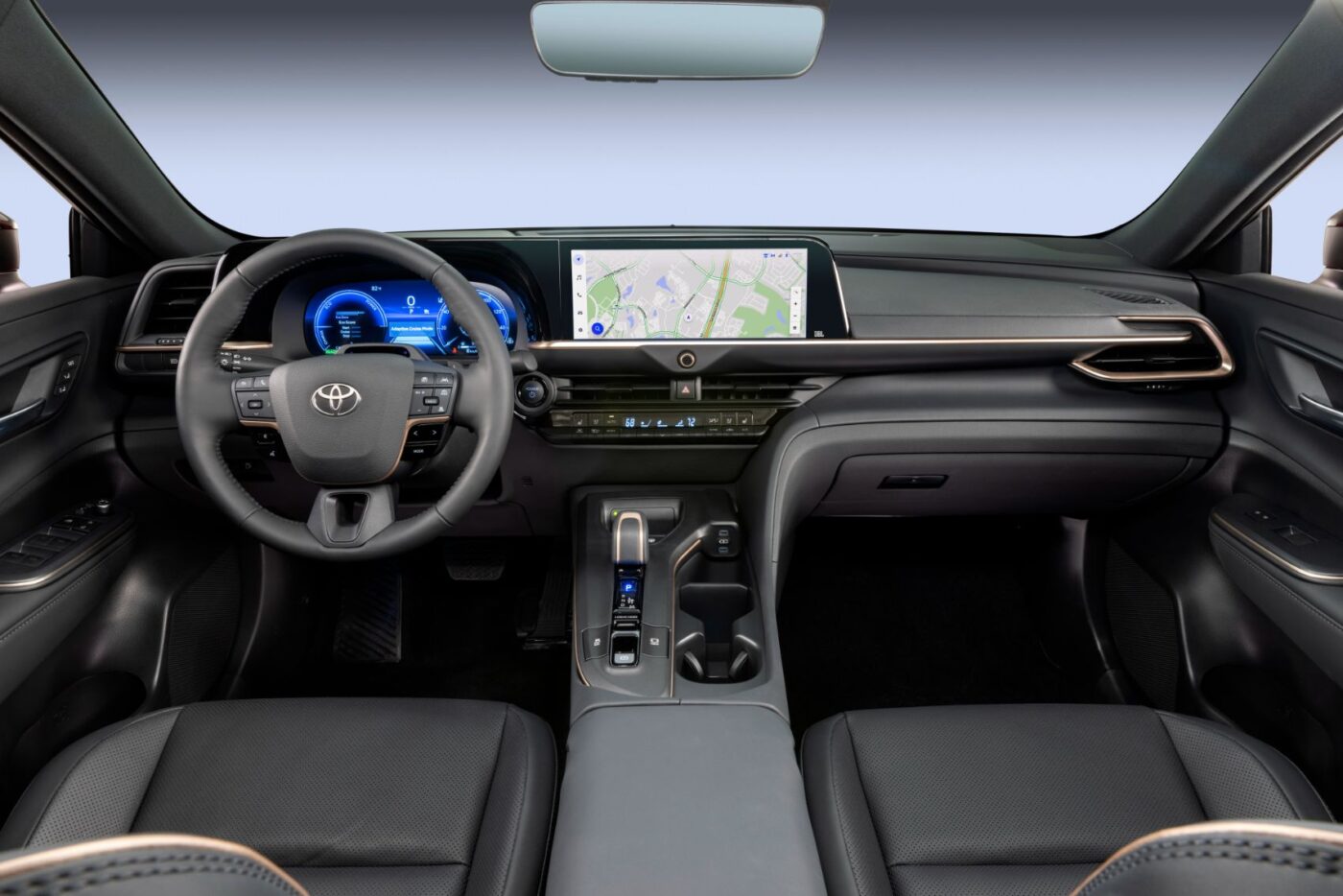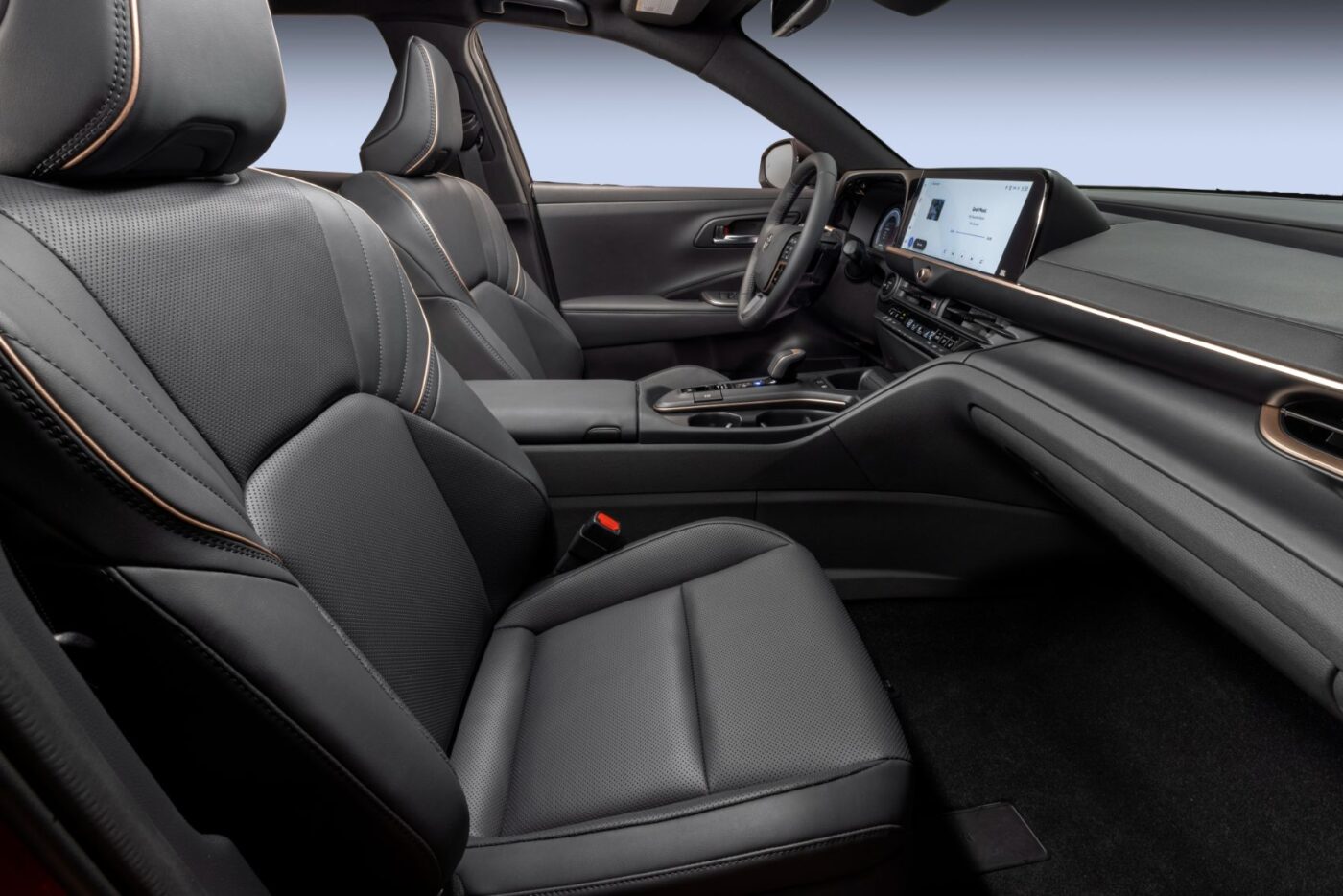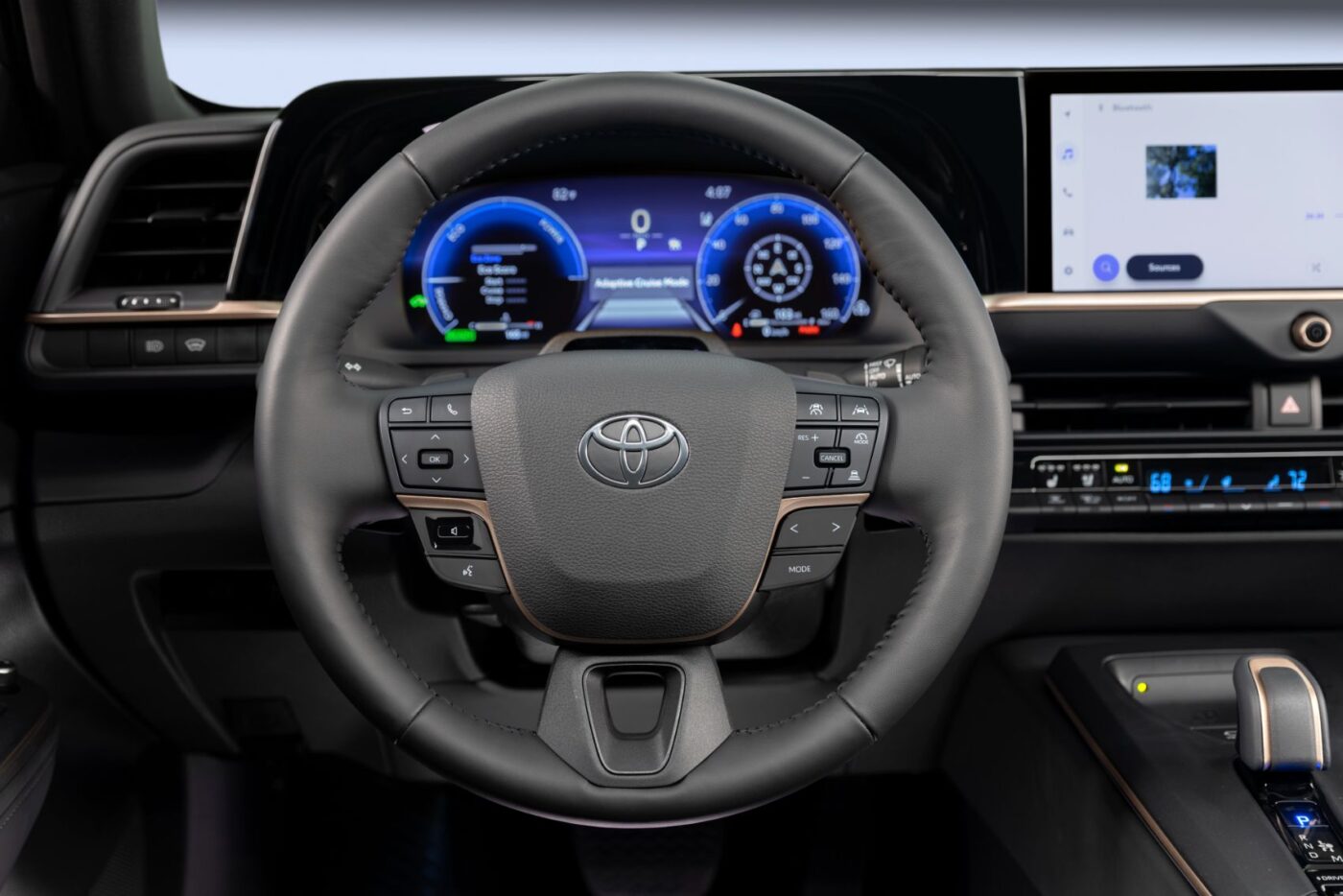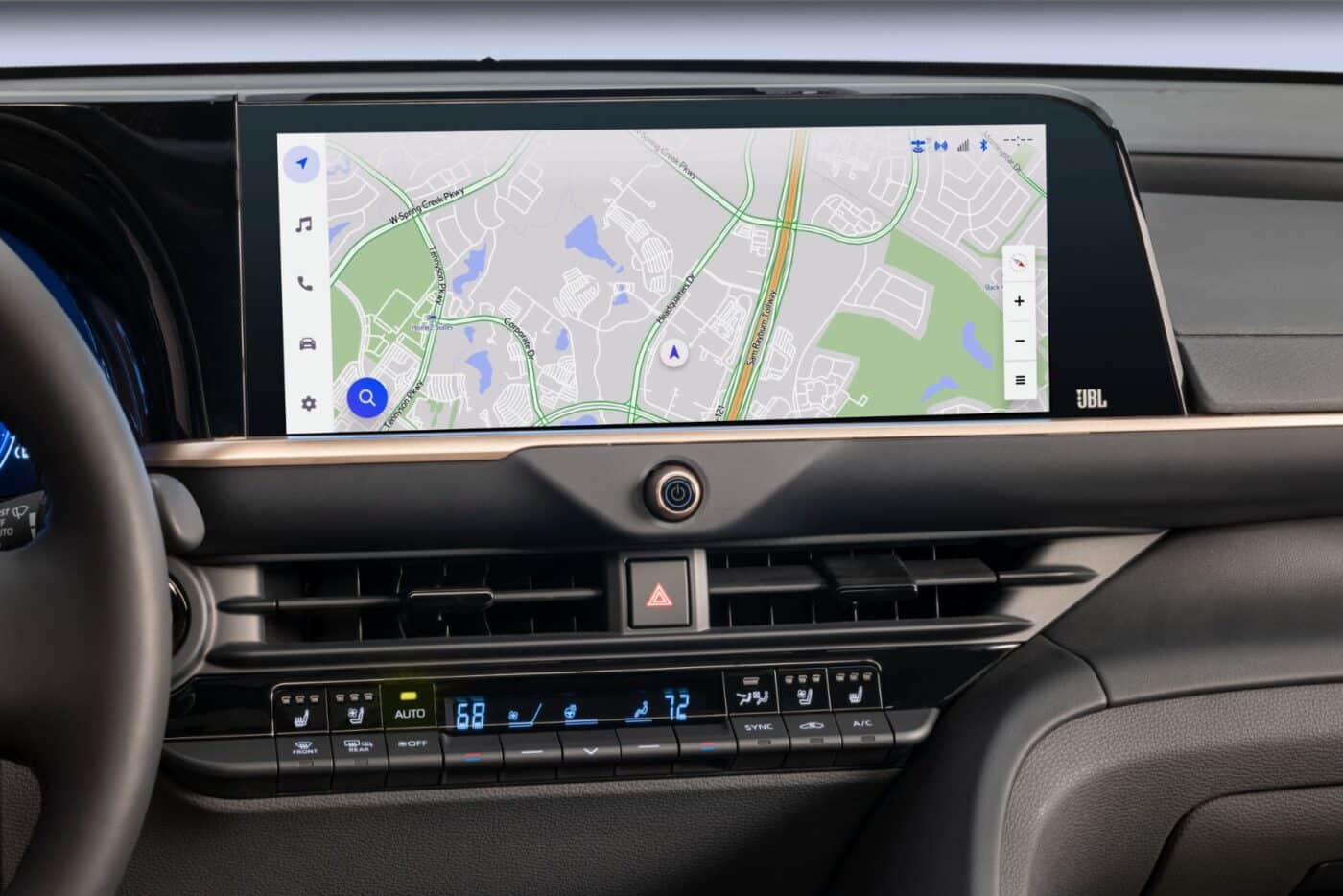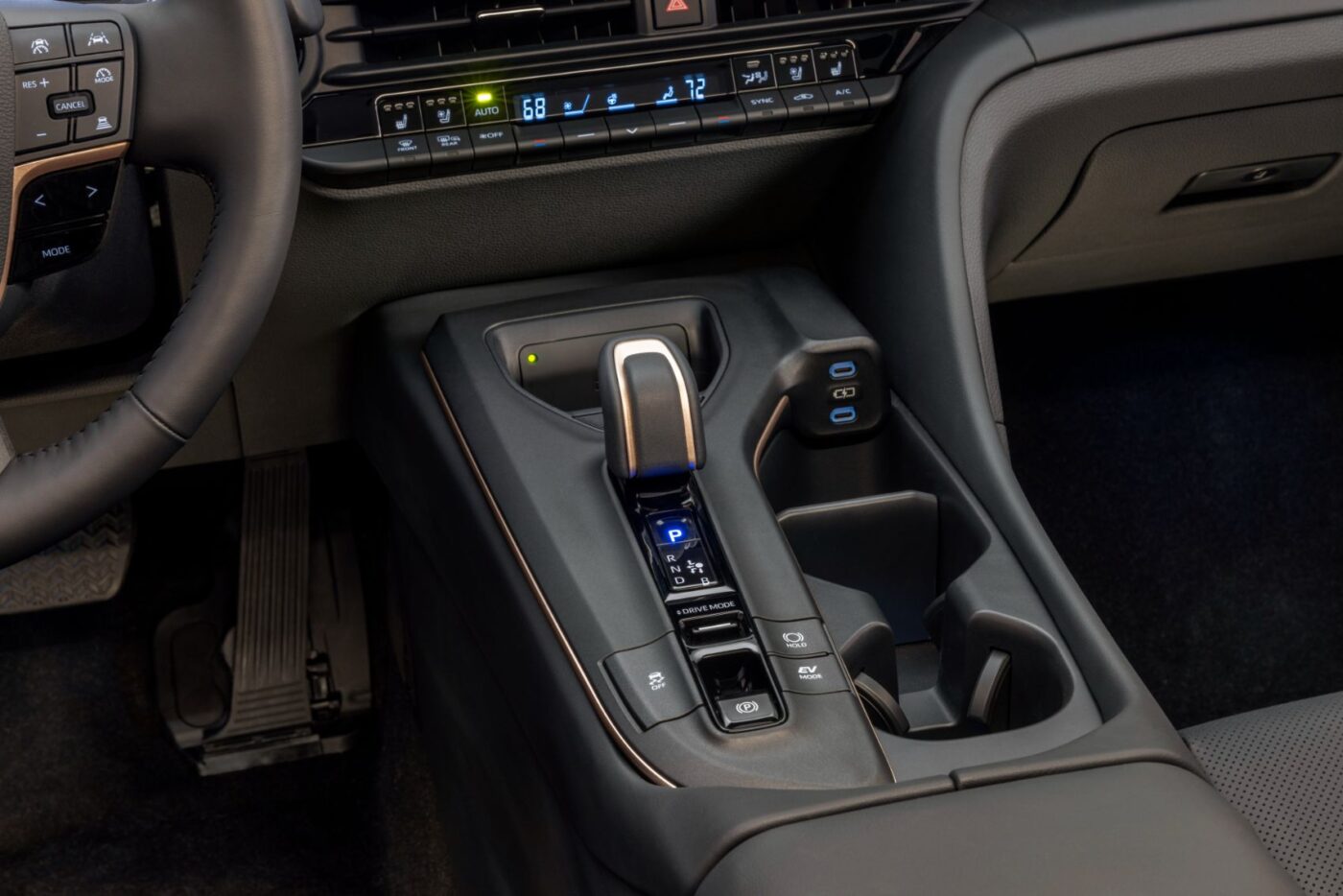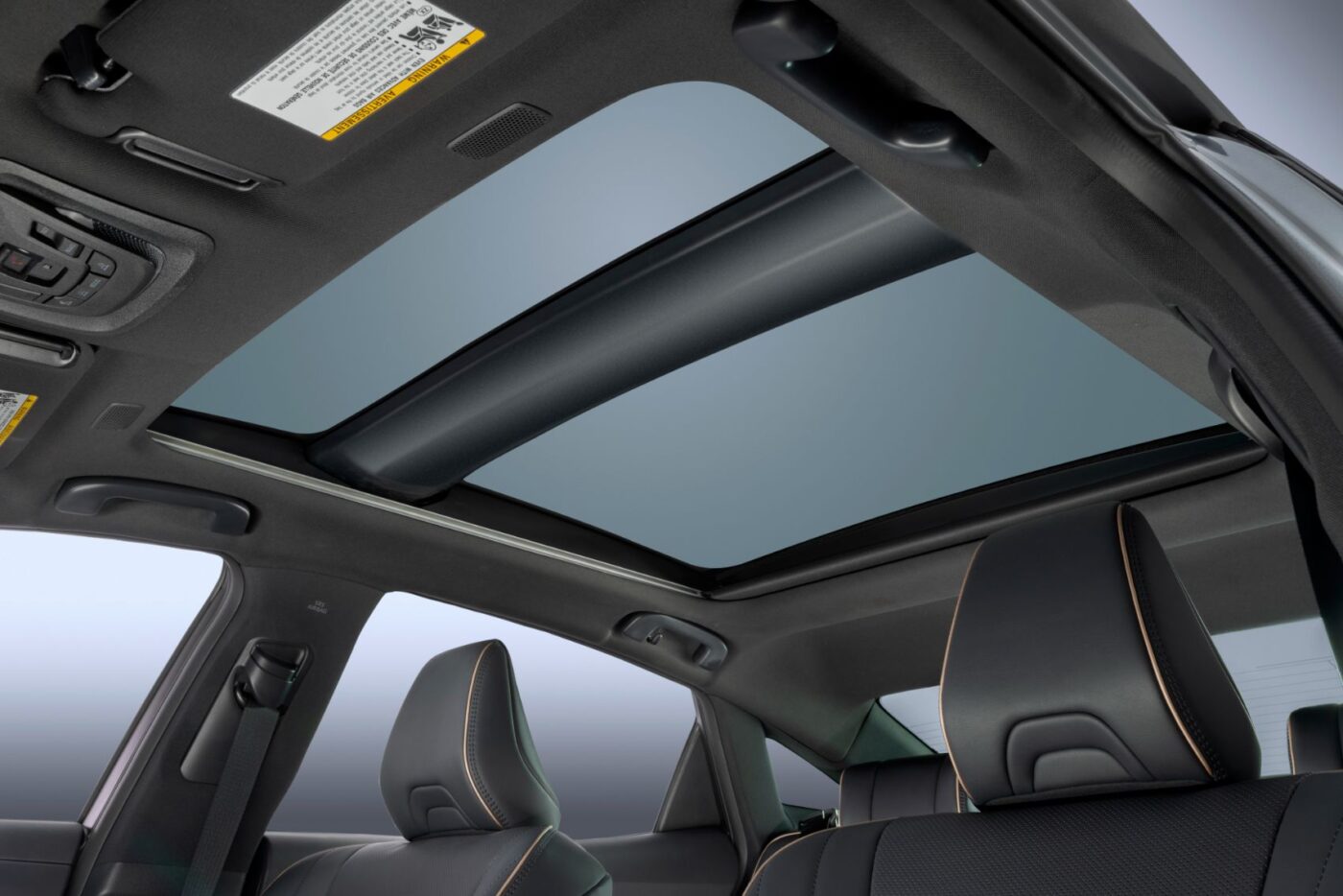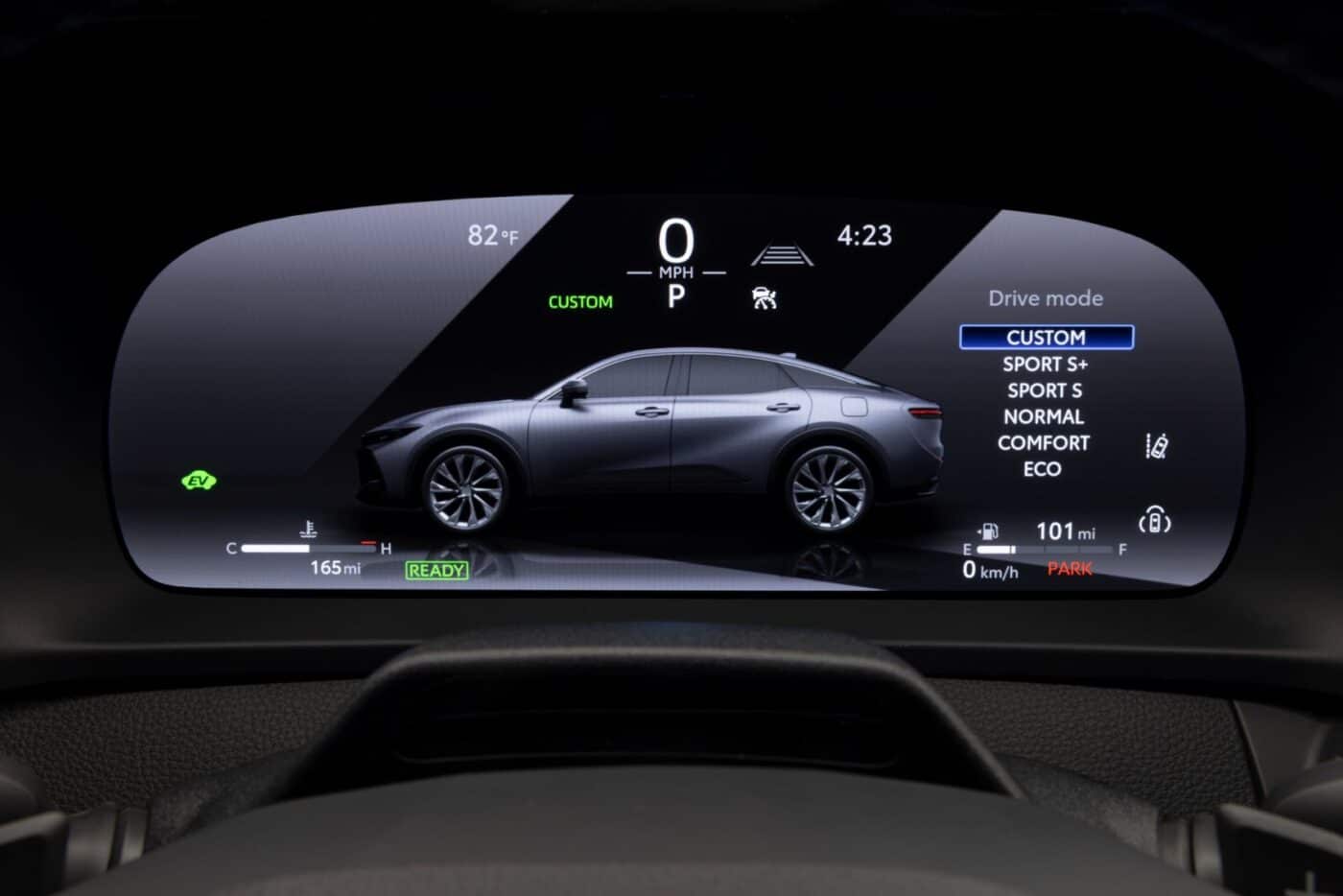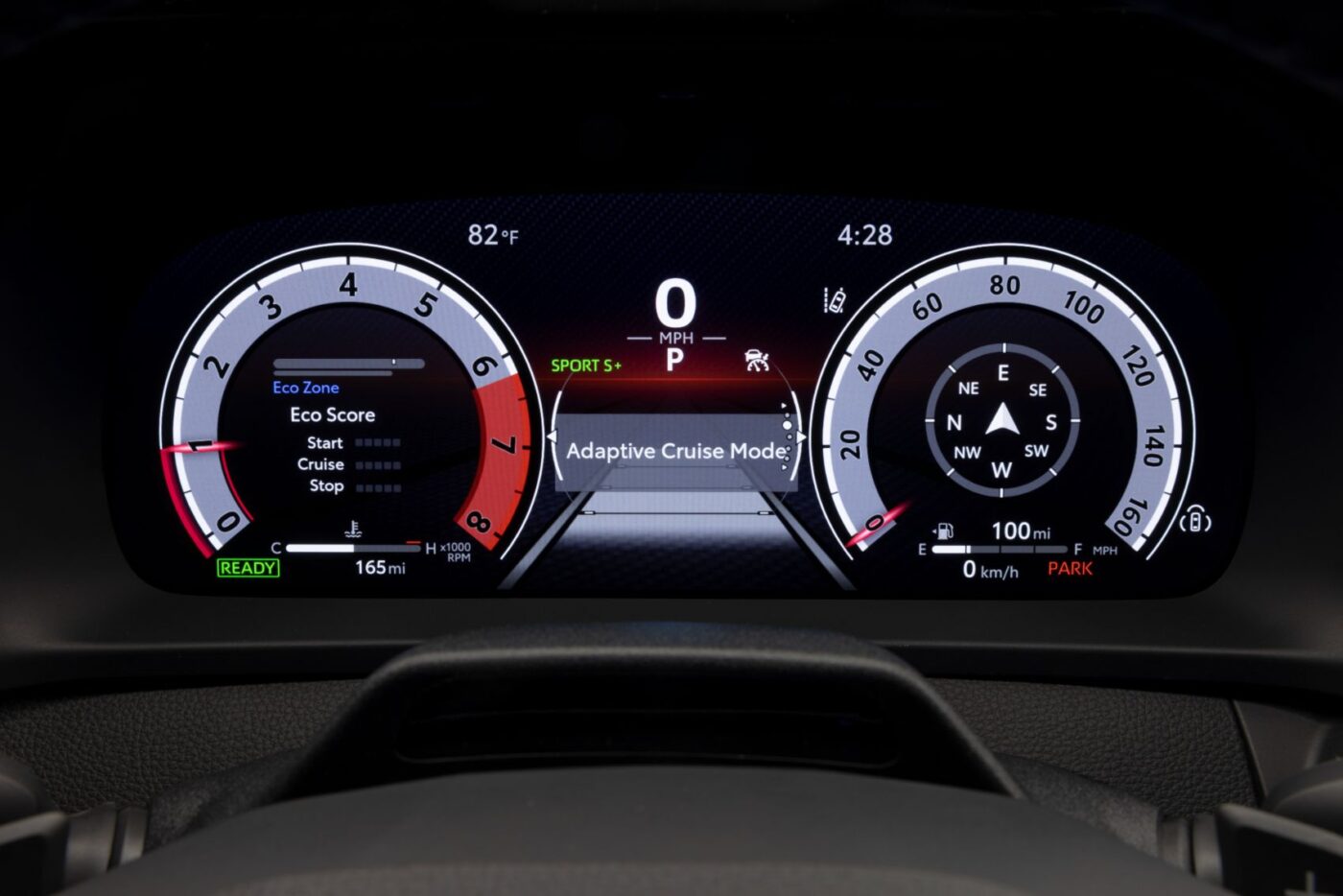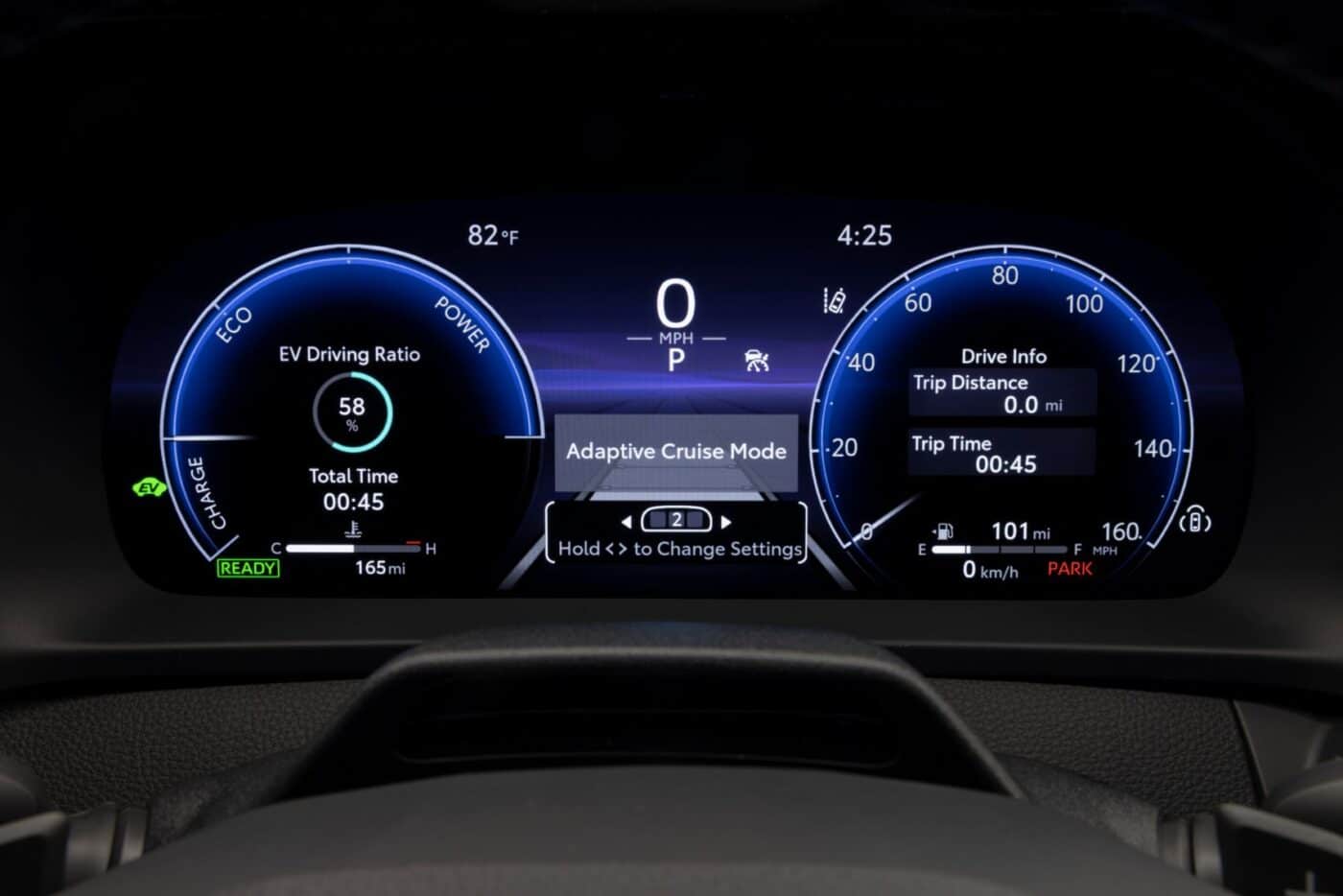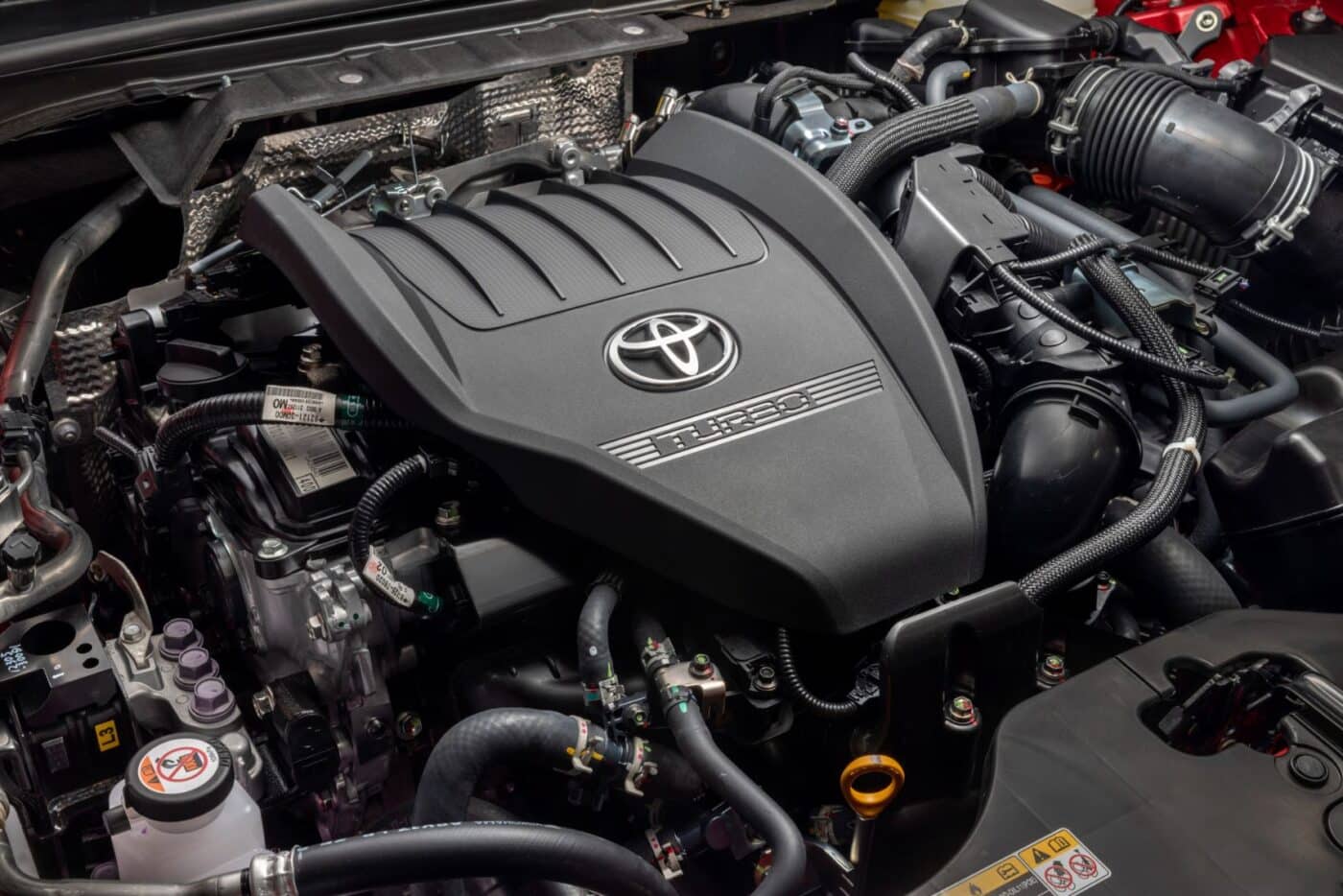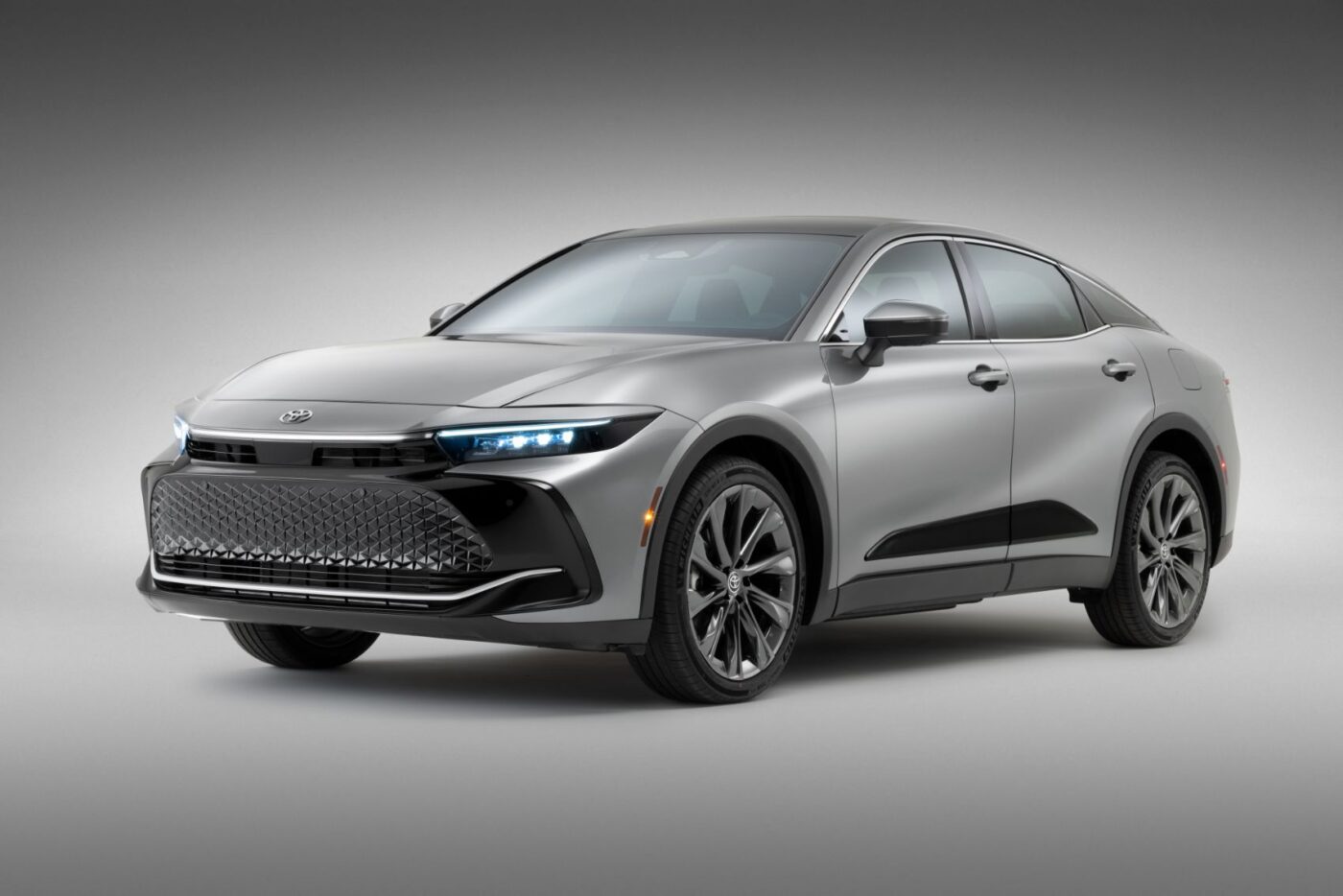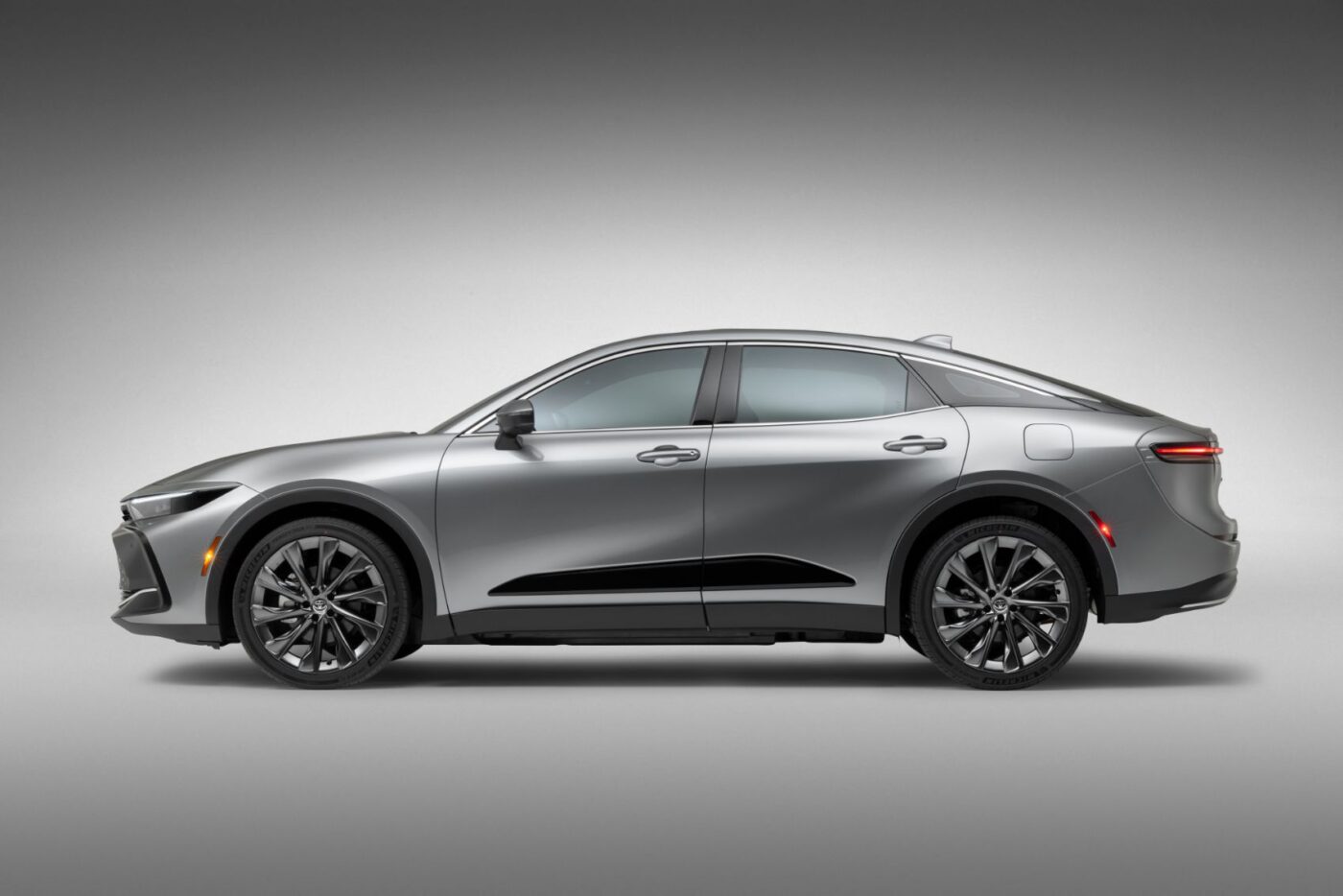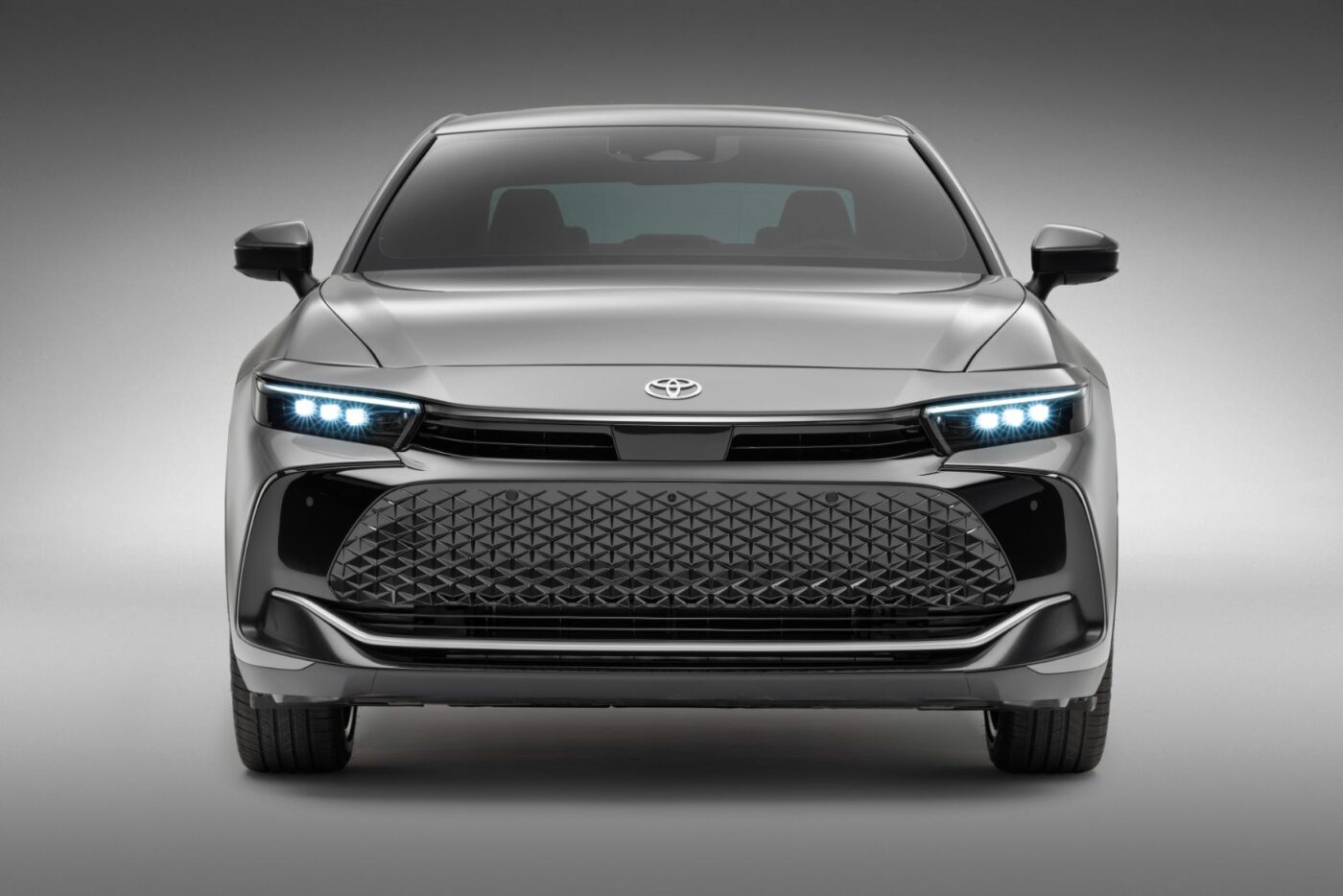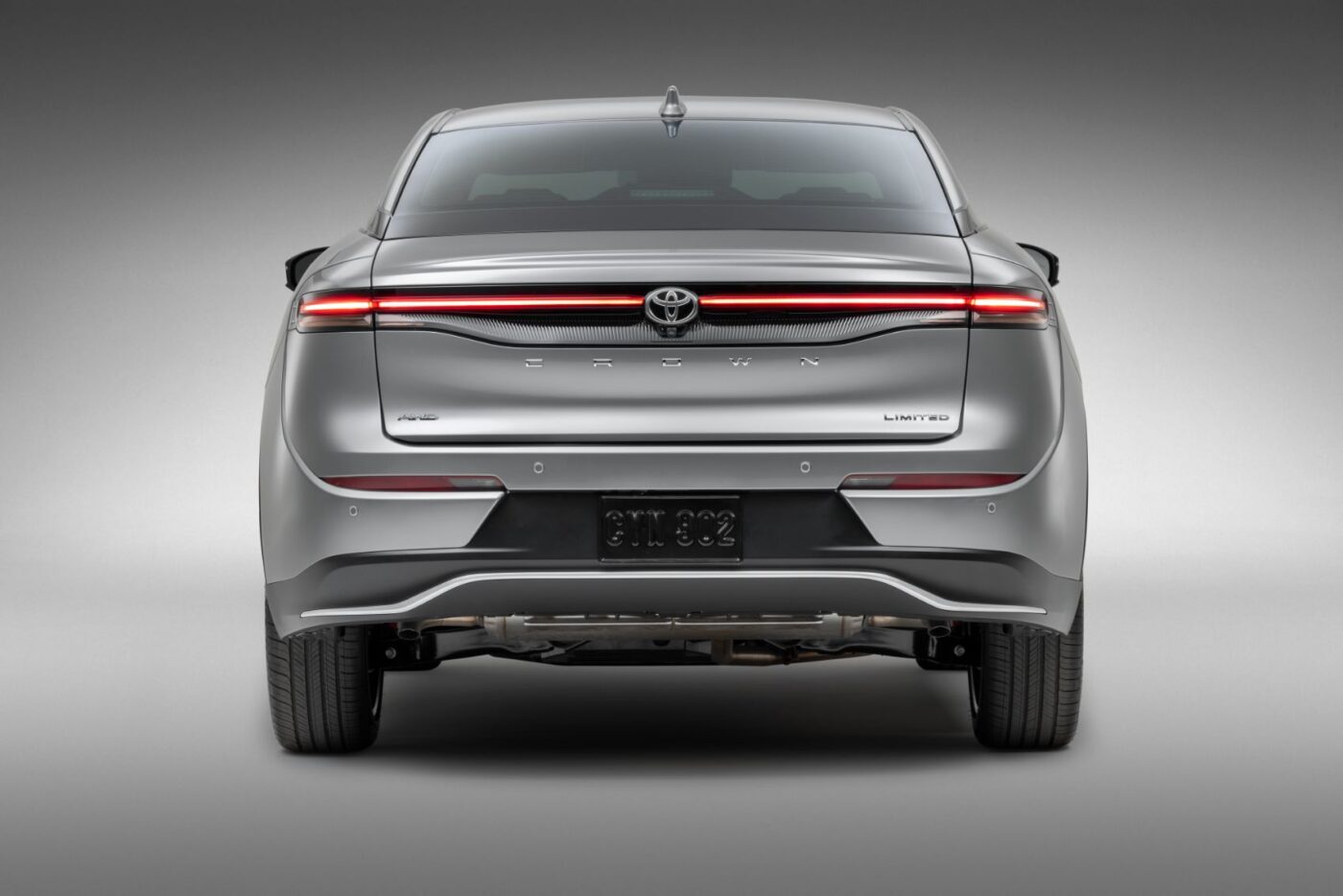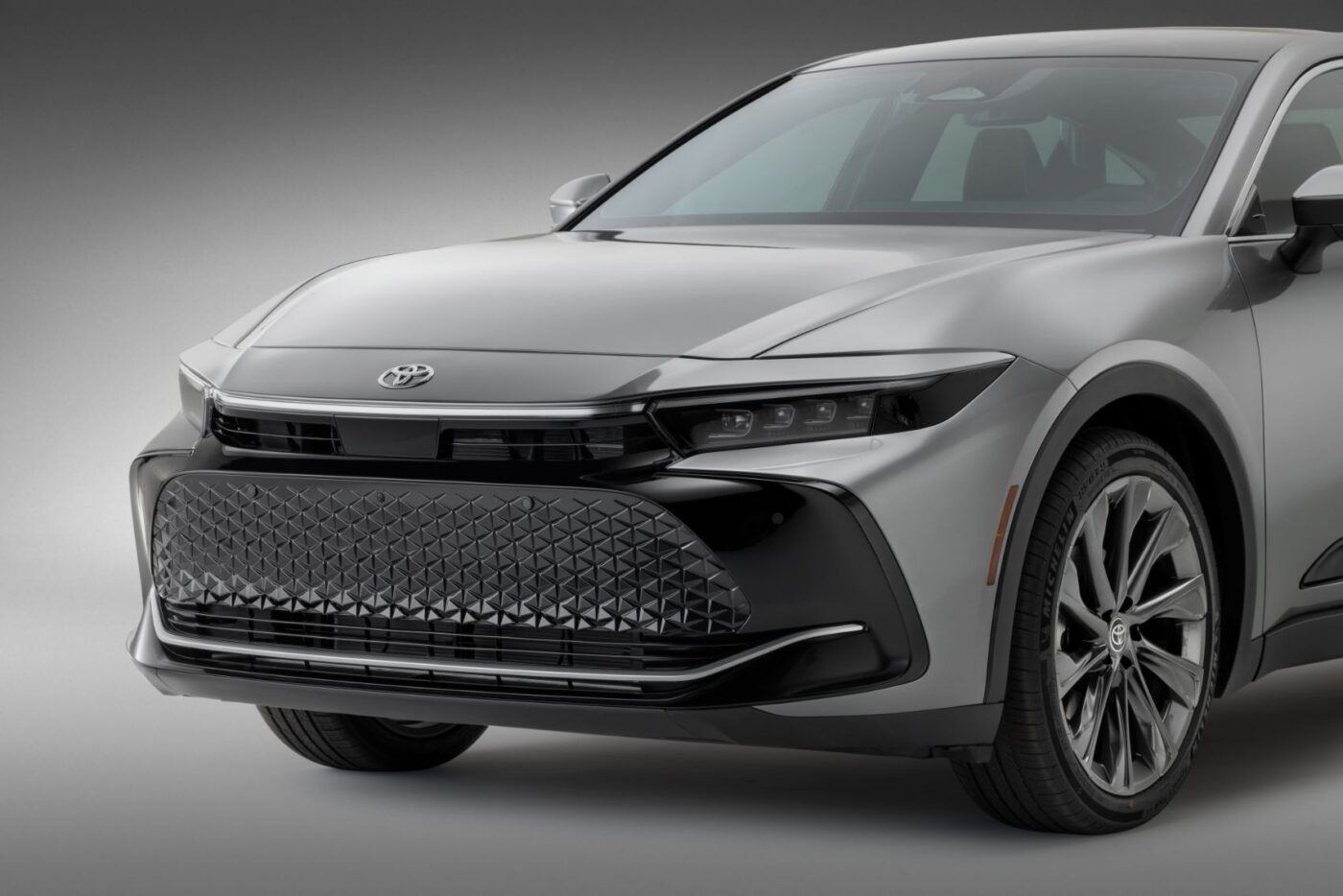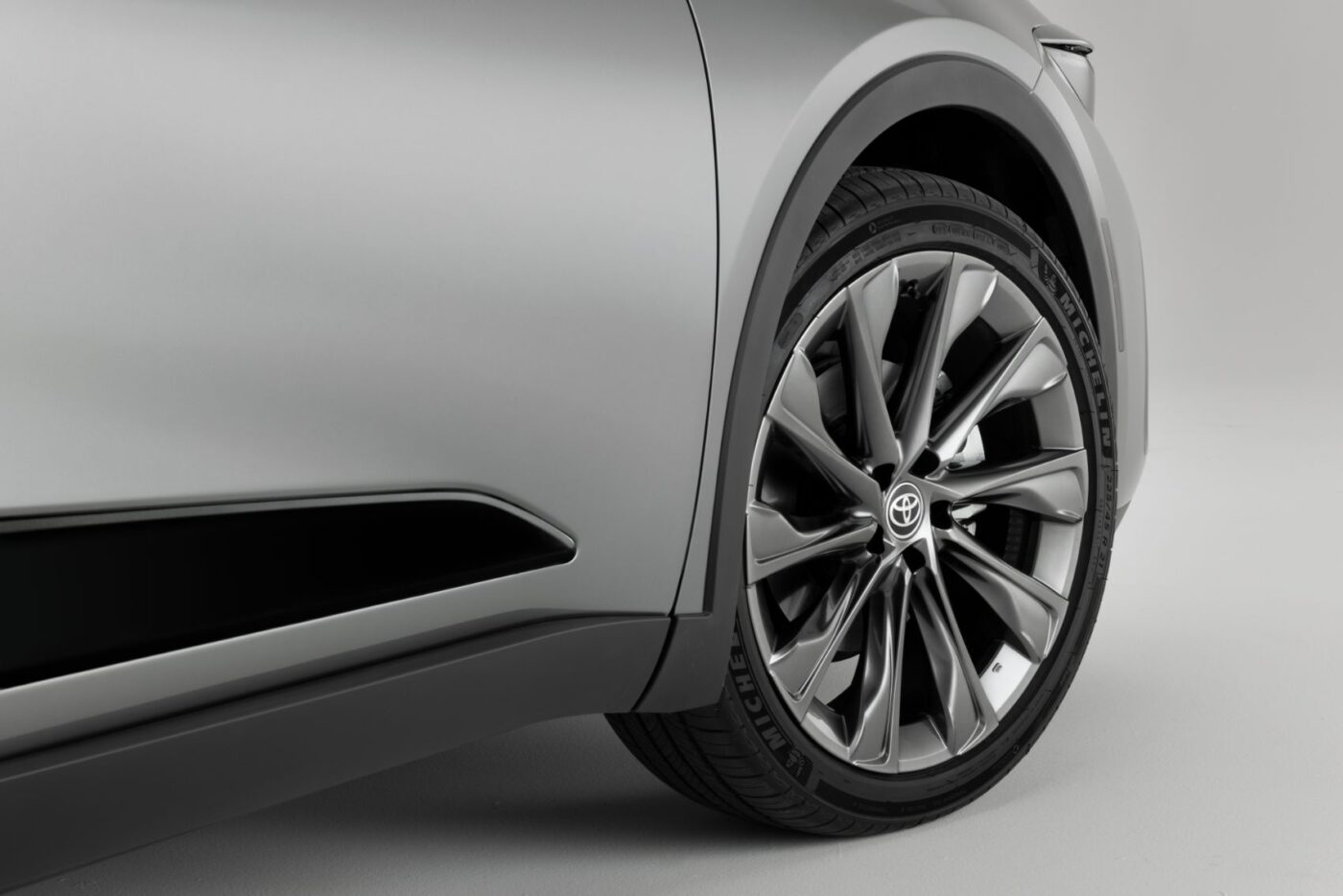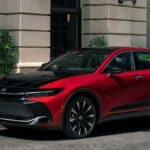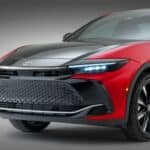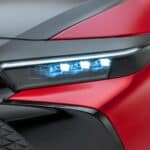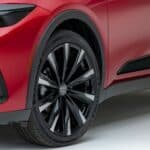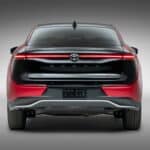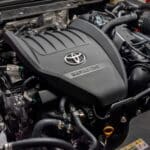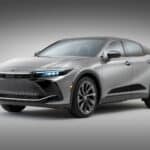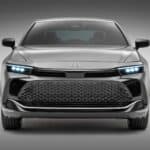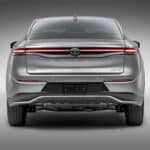The 2023 Toyota Crown is the Japanese automaker’s newest flagship crossover sedan. The latest Crown is riding on the brand’s TNGA-K platform that underpins the Camry, Highlander, RAV4, and the outgoing Avalon. Toyota has prepared four body styles for the new Crown depending on the market: Crossover, Sedan, Station Wagon, and SUV. We fancy the SUV body style the most, and we’re still wondering why Toyota didn’t choose that for its maiden USA return.
The original Toyopet Crown was the first Japanese import to arrive on U.S. shores in 1958. On the flip side, Uncle Sam got its last taste of the Crown in 1972. Despite its 30-year absence in North America, the Crown remains Japan’s pinnacle of Toyota luxury cars.
2023 Toyota Crown: What’s New?
The 2023 Toyota Crown is an all-new model that replaces the full-sized Avalon sedan in the brand’s North American portfolio. It’s taller, wider, and longer than a Camry and has a 112.2-inch wheelbase to offer plenty of passenger and cargo room.
Toyota said the new Crown is nearly four inches higher than a Camry thanks to its crossover-like silhouette. All trim variants of the new Toyota Crown come with hybrid powertrains, standard all-wheel drive, and a host of comfort and safety technology.
Two Hybrid Powertrains & Standard AWD
The 2023 Toyota Crown is launching in three trim variants: XLE, Limited, and Platinum. The Crown XLE and Limited have a 2.5-liter four-cylinder gas engine (turning the front wheels) and a hybrid electric motor in the rear axle. Toyota did not mention the power figures, but we’ve seen this hybrid system in other Toyota and Lexus vehicles.
If we have to guess, the base hybrid powertrain is suitable for under 250 horsepower, but we’ll have to wait for Toyota’s official figures. Moreover, the base hybrid powertrain has a continuously variable automatic transmission (CVT) to help yield a manufacturer-claimed 38 mpg.
Meanwhile, the range-topping Crown Platinum has what Toyota calls a new Hybrid Max powertrain with a turbocharged 2.4-liter four-cylinder gas engine, a front electric motor, and a rear-mounted electric motor that pumps out a combined 340 horsepower. We like the 340-horsepower figure, but the fuel economy takes a hit. Moreover, the Hybrid Max has a six-speed automatic gearbox to offer a genuinely sporty drive.
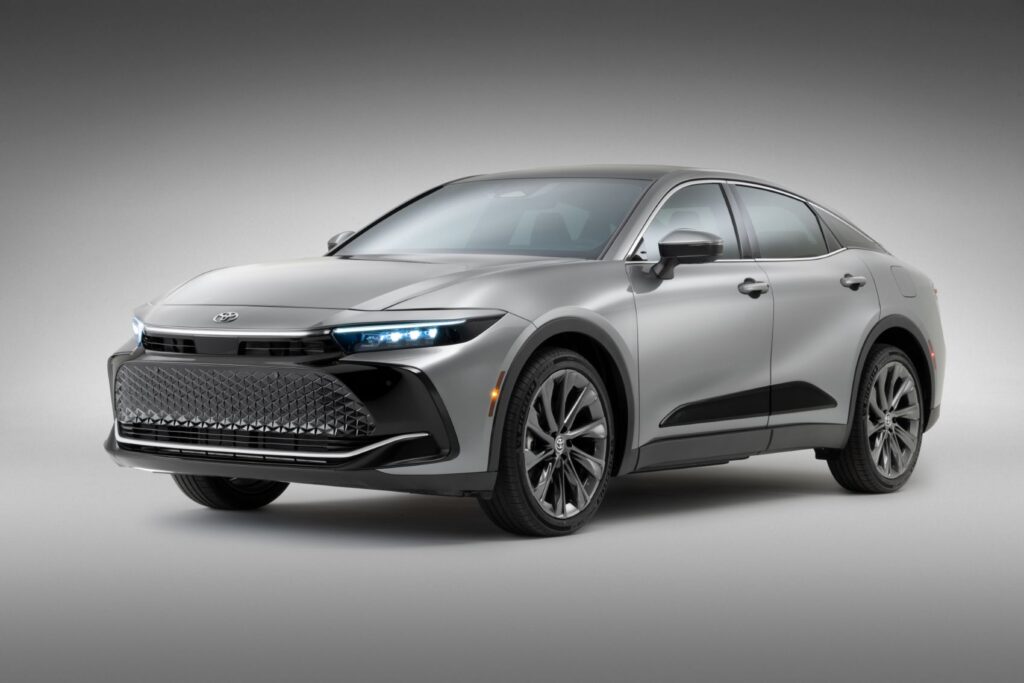
Understated Luxury
The new Crown (now in its 16th generation) is a reboot for Toyota’s longest-running nameplate. It has an interior that exudes modern luxury without going overboard with flashy materials and shiny wood paneling.
The base Crown XLE has standard eight-way power and heated front seats, while the Limited and Platinum add ventilated front and heated rear seats. The XLE grade has premium Softex and black woven upholstery, and genuine cowhide is standard on the Crown Limited and Platinum.
Meanwhile, all trim grades have dual-zone automatic climate control, a 12.3-inch digital instrument cluster (with configurable displays), a 12.3-inch infotainment touchscreen, wireless charging, USB Type A and Type C charging ports, and a backup camera. Of course, connectivity options like wireless Apple CarPlay, Android Auto, Wi-Fi, and Bluetooth are standard across the board
The base Crown XLE adds 19-inch wheels and a six-speaker audio system, while the Limited has a fixed panoramic roof and an 11-speaker JBL audio system. Toyota’s Advanced Technology Package adds 21-inch alloy wheels, a birds-eye view camera, and a digital key.
The top-of-the-line Crown Platinum adds adaptive variable suspension, bespoke 21-inch wheels, six driving modes, and optional two-tone paint. All Crown grades have acoustic glass and extensive sound deadening to promise a whisper-quiet ride, just like a Crown should.
Toyota Safety Sense 3.0
The 2023 Crown is standard with Toyota Safety Sense 3.0. It includes advanced driving aids like dynamic radar cruise control, lane departure alert, lane tracing assist, automatic high beams, road sign assist, blind-spot monitoring, and rear cross-traffic alert, to name a few. The new Crown also has an Advanced Park System that automatically identifies a parking space and parks the vehicle.
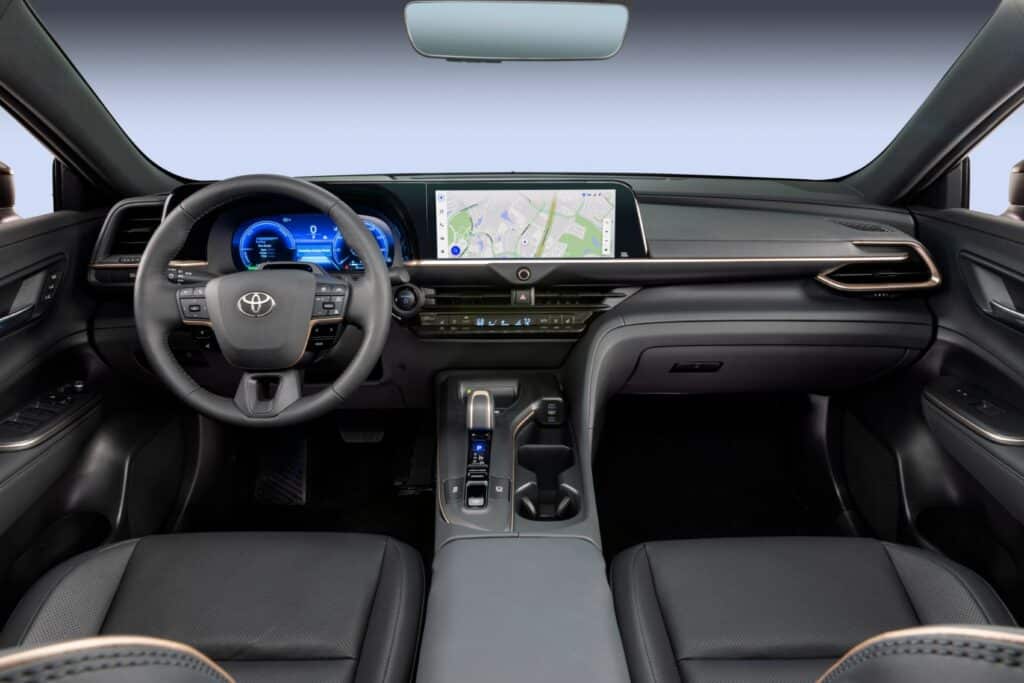
Toyota Factory Warranty
The 2023 Toyota Crown has a three-year/36,000-mile bumper-to-bumper warranty, a five-year/60,000-mile powertrain warranty, and a five-year corrosion and perforation warranty with no mileage restrictions.
And since the Crown is a hybrid, it also comes with an eight-year/100,00-mile hybrid warranty and a 10-year/150,000-mile battery warranty. The Crown also includes two years of factory-scheduled maintenance and roadside assistance.
Depending on how much you drive, an extended warranty may benefit you. Before you decide, see this helpful guide to Toyota extended warranties.
2023 Toyota Crown: Pricing & Availability
The 2023 Toyota Crown starts at $41,045 for the XLE Hybrid AWD, while the Limited Hybrid AWD starts at $46,545. At the top of the lineup is the Platinum Hybrid MAX AWD starting at
$53,445. Those MSRP figures are inclusive of the $1,095 destination fee.
Alvin Reyes is an Automoblog feature columnist and an expert in sports and performance cars. He studied civil aviation, aeronautics, and accountancy in his younger years and is still very much smitten to his former Lancer GSR and Galant SS. He also likes fried chicken, music, and herbal medicine.
Photos & Source: Toyota Motor Sales, U.S.A., Inc.

